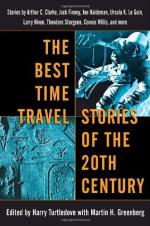|
This section contains 1,893 words (approx. 7 pages at 300 words per page) |

|
Le Guin employs the same pervasive light-and-shadow imagery in both her science fiction and her fantasy; the significance of true names, the touching of hands, and the circle journey are important in both. The nature of evil and the preservation of the Equilibrium are her concern in Earthsea as well as in the Hainish novels. Specific images are repeated almost exactly…. Taoism is a major philosophical influence in both, and both reflect her interest in dreams and deep understanding of anthropology.
But more important than any of these analogies—and basic to the achievement of her primary purpose in both the Earthsea trilogy and the Hainish novels—is Le Guin's use of the psychological journey toward the integration of personality that Carl Jung wrote about. The progression of an ego from uncertainty and self-doubt to assurance and fulfillment is a process to which Jung devoted a great deal...
|
This section contains 1,893 words (approx. 7 pages at 300 words per page) |

|


